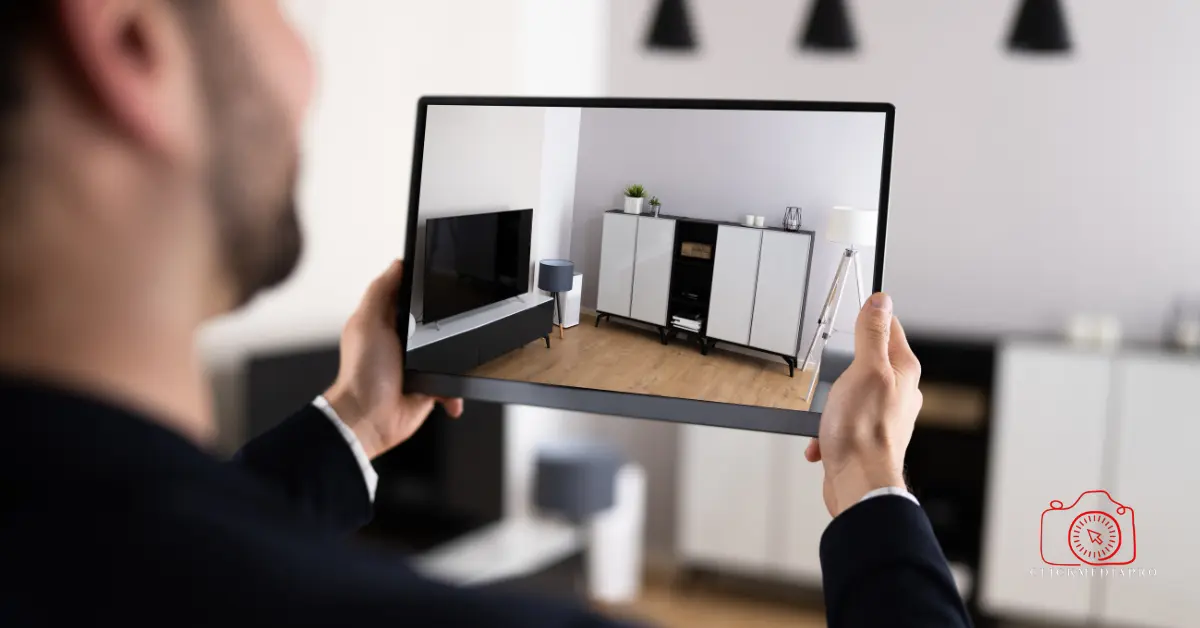The real estate industry has experienced rapid technological advancements in recent years. One of the most impactful innovations is virtual tours. These immersive, interactive experiences are transforming the way properties are marketed and viewed by potential buyers. With the rise of virtual tours, real estate agents and property owners can showcase homes in a dynamic way, reaching a broader audience and providing a seamless user experience.
In this detailed blog, we will explore how virtual tours are revolutionizing the real estate market, their benefits, best practices, and future potential.
What Are Virtual Tours?
A virtual tour is a simulation of an existing property that allows users to navigate through it online. These tours use a combination of high-resolution images, 360-degree views, and sometimes even interactive features like clickable hotspots and information panels.
There are several types of virtual tours used in real estate:
- 360-Degree Virtual Tours: Panoramic views that allow users to look around in any direction.
- 3D Virtual Tours: Full property walkthroughs that provide an immersive experience, often created using platforms like Matterport.
- Video Walkthroughs: Pre-recorded guided tours narrated by real estate agents.
Get valuable insights and updates from the Wedu Real Estate Blog to stay informed about market changes.
How Virtual Tours Work
Virtual tours are created using specialized cameras and software. The process typically involves:
- Capturing the Property: High-resolution cameras capture multiple angles of each room to create panoramic views.
- Stitching Images: Software stitches the images together to form a seamless experience.
- Interactive Features: Hotspots, pop-ups, and navigation tools are added to enhance the user experience.
- Integration: The final virtual tour is integrated into property listings on websites, social media, and real estate platforms.
For professional marketing solutions, Click Media Pro offers innovative services tailored for real estate.
The Rise of Virtual Tours in Real Estate
The demand for virtual tours skyrocketed during the COVID-19 pandemic when physical property visits were limited. However, even as restrictions have eased, virtual tours remain a preferred option for many buyers and sellers.
- Statistics:
- Real estate listings with virtual tours receive 49% more inquiries than those without.
- 77% of buyers prefer to view a property virtually before scheduling an in-person visit.
Benefits of Virtual Tours for the Real Estate Market
1. Enhanced Buyer Experience
Virtual tours provide a comprehensive view of the property, allowing potential buyers to explore at their own pace from the comfort of their homes. This convenience saves time and offers a better understanding of the property’s layout.
2. Global Reach
Virtual tours make it possible to market properties to a global audience. International buyers can explore homes without the need to travel, expanding the pool of potential buyers.
3. Time and Cost Savings
For both buyers and agents, virtual tours reduce the need for multiple physical showings. This saves time and resources, streamlining the property viewing process.
4. Increased Engagement
Listings with virtual tours tend to have higher engagement rates. Potential buyers spend more time exploring properties, leading to better-informed purchasing decisions.
5. Competitive Advantage for Agents
Agents who offer virtual tours stand out in a crowded market. This cutting-edge technology showcases their commitment to innovation and superior customer service.
Get valuable insights and updates from the Wedu Real Estate Blog to stay informed about market changes.
Best Practices for Creating Effective Virtual Tours
1. High-Quality Photography
Invest in professional photography equipment or hire a skilled photographer to capture crisp, clear images.
2. Proper Staging
Stage the property to highlight its best features. Declutter and add decorative elements for a polished look.
3. Good Lighting
Ensure that all rooms are well-lit to create a welcoming atmosphere.
4. Smooth Navigation
The tour should be easy to navigate with intuitive controls.
5. Interactive Features
Add clickable hotspots that provide information about specific features of the property, such as smart home systems or custom finishes.
6. Mobile Optimization
Ensure the virtual tour works seamlessly on mobile devices, as many users browse listings on their smartphones.
Explore exceptional homes and properties through Vaughan ON Real Estate for a better living experience.
The Impact of Virtual Tours on Real Estate Sales
Virtual tours have been shown to positively impact key sales metrics:
- Higher Sale Prices: Properties with virtual tours often sell for higher prices as they attract more interest.
- Faster Sales: Listings with virtual tours spend less time on the market compared to traditional listings.
- Better Buyer Engagement: Buyers are more likely to contact agents after viewing a virtual tour.
Stay updated with the latest trends in the Canada Real Estate Market for smarter investment decisions.
Success Stories: Real Estate Agents and Virtual Tours
Case Study 1: Luxury Condo in Downtown Toronto
An upscale condominium in Toronto struggled to gain traction. After adding a virtual tour, the property received 35% more inquiries and sold within three weeks.
Case Study 2: Rural Property in Ontario
A rural property located several hours from major cities initially had limited interest. The addition of a 3D virtual tour allowed city-based buyers to explore the property remotely, leading to a successful sale at the asking price.
Vaughan Preconstruction Properties offer excellent investment opportunities in one of Ontario’s fastest-growing cities.
The Future of Virtual Tours in Real Estate
The future of virtual tours is promising, with advancements in technology continuing to enhance the experience.
1. Virtual Reality (VR) Integration
As VR technology becomes more accessible, fully immersive virtual tours will become standard in real estate marketing.
2. AI-Driven Personalization
Artificial intelligence can customize virtual tours based on user preferences, highlighting features most relevant to individual buyers.
3. Augmented Reality (AR) Features
AR technology will allow buyers to visualize furniture placement and interior design changes in real-time during virtual tours.
Challenges and Limitations
While virtual tours offer numerous benefits, they also come with challenges:
1. High Initial Investment
Creating high-quality virtual tours requires a significant investment in equipment and software.
2. Technical Issues
Poor navigation, slow load times, and compatibility issues can deter potential buyers.
3. Lack of Physical Interaction
Virtual tours cannot completely replace the sensory experience of physically visiting a property.
How to Get Started with Virtual Tours
- Choose the Right Equipment: Invest in a 360-degree camera or hire a professional photographer.
- Select a Virtual Tour Platform: Platforms like Matterport, Kuula, and Zillow 3D Home offer user-friendly tools for creating tours.
- Plan the Shoot: Schedule shoots during optimal lighting conditions and stage the property beforehand.
- Promote the Tour: Share the virtual tour on property listings, social media, and email campaigns.
Final Thoughts
Virtual tours are revolutionizing the real estate market by offering a modern, convenient, and engaging way to showcase properties. As technology continues to evolve, these immersive experiences will become even more integral to the buying and selling process.
Whether you’re a real estate agent looking to stand out or a property seller aiming to attract more buyers, embracing virtual tours can give you a competitive edge in the market.

